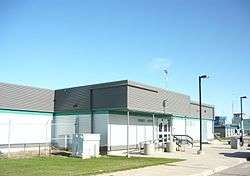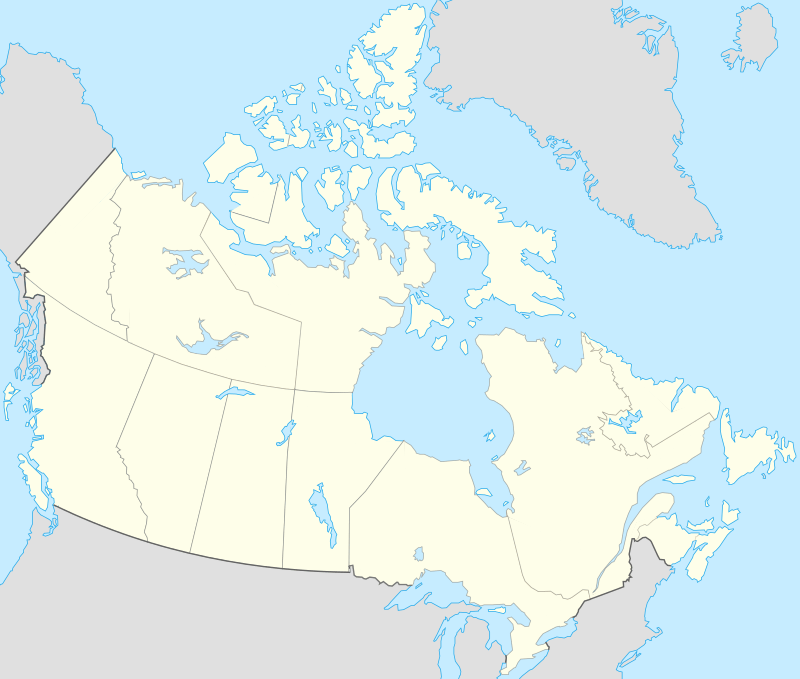Prince Albert (Glass Field) Airport
Prince Albert (Glass Field) Airport (IATA: YPA, ICAO: CYPA) is located 1 nautical mile (1.9 km; 1.2 mi) northeast of Prince Albert, Saskatchewan, Canada.
Prince Albert (Glass Field) Airport | |||||||||||||||
|---|---|---|---|---|---|---|---|---|---|---|---|---|---|---|---|
 | |||||||||||||||
| Summary | |||||||||||||||
| Airport type | Public | ||||||||||||||
| Operator | City of Prince Albert | ||||||||||||||
| Serves | Prince Albert | ||||||||||||||
| Location | Prince Albert, Saskatchewan | ||||||||||||||
| Hub for | |||||||||||||||
| Time zone | CST (UTC−06:00) | ||||||||||||||
| Elevation AMSL | 1,405 ft / 428 m | ||||||||||||||
| Coordinates | 53°12′52″N 105°40′23″W | ||||||||||||||
| Website | www.princealbertairport.com | ||||||||||||||
| Map | |||||||||||||||
 CYPA Location in Saskatchewan  CYPA CYPA (Canada) | |||||||||||||||
| Runways | |||||||||||||||
| |||||||||||||||
| Statistics (2010) | |||||||||||||||
| |||||||||||||||
History
RCAF Station Prince Albert
The airport was originally opened near Prince Albert on 22 July 1940 under the British Commonwealth Air Training Plan as No. 6 Elementary Flying Training School, with Relief Landing Fields located near Hagen and Emma Lake. The school closed on 15 November 1944.[4]
From 17 March 1941 to 11 November 1942, the station doubled as No. 6 Air Observer School.
Not much remains of the former No. 6 EFTS. A monument was erected to pay tribute to the 17 airmen and one civilian who died in training accidents at the school.
RCAF Aerodrome Prince Albert c.1942
In approximately 1942 the aerodrome was listed at 53°13′N 105°41′W with a variation of 20 degrees east and elevation of 1,400 ft (430 m). Three serviceable runways were listed as follows: [5]
| Runway Name | Length | Width | Surface |
|---|---|---|---|
| 3/21 | 3,400 ft (1,000 m) | 600 ft (180 m) | Turf Field - Irregular |
| 10/28 | 3,000 ft (910 m) | 600 ft (180 m) | Turf Field - Irregular |
| 16/34 | 3,000 ft (910 m) | 600 ft (180 m) | Turf Field - Irregular |
Relief landing field – Hagen
A Relief Landing field for RCAF Station Prince Albert was located approximately 18 miles South-East. The site was located west of the hamlet of Hagen, Saskatchewan. The Relief field was a square, turf, all way field measuring 2100' x 2100'. In approximately 1942 the aerodrome was listed at 52°57′N 105°40′W with a variation of 20 degrees east and an unlisted elevation.[6] A review of Google Maps satellite imagery on 7 June 2018 shows no details indicating an airfield at the listed coordinates.
Name
This airport is now named for Floyd Glass, who learned to fly in the late 1930s, then served as a military flying training instructor during the Second World War. Postwar, he was the first general manager of the provincial Crown corporation Saskatchewan Government Airways. He resigned from this post, flew briefly with British Columbia's Queen Charlotte Airways, then returned to Saskatchewan and in 1955 formed his own firm, Athabaska Airways, which still exists under the name "Transwest Air". Glass died in 1999.
Airlines and destinations
| Airlines | Destinations |
|---|---|
| ExpressAir | Regina |
| Transwest Air | Fond-du-lac, Fort McMurray, La Ronge, Points North, Saskatoon, Stony Rapids, Uranium City, Wollaston Lake |
| West Wind Aviation | Fond-du-Lac, La Ronge, Points North, Saskatoon, Stony Rapids, Uranium City, Wollaston Lake |
West Wind Aviation also operates charters for staff working at Northern minesites for Cameco and AREVA
References
- Canada Flight Supplement. Effective 0901Z 16 July 2020 to 0901Z 10 September 2020.
- Synoptic/Metstat Station Information
- Total aircraft movements by class of operation — NAV CANADA flight service stations
- Hatch, F. J. (1983). The Aerodrome of Democracy: Canada and the British Commonwealth Air Training Plan, 1939-1945. Ottawa: Directorate of History, Department of National Defence. ISBN 0660114437.
- Staff writer (c. 1942). Pilots Handbook of Aerodromes and Seaplane Bases Vol. 2. Royal Canadian Air Force. p. 57.
- Staff writer (c. 1942). Pilots Handbook of Aerodromes and Seaplane Bases Vol. 2. Royal Canadian Air Force. p. 42.
External links
- Official web site
- Page about this airport on COPA's Places to Fly airport directory
- Past three hours METARs, SPECI and current TAFs for Prince Albert (Glass Field) Airport from Nav Canada as available.
- British Commonwealth Air Training Plan Museum - www.airmuseum.ca
- Bruce Forsyth's Canadian Military History Page